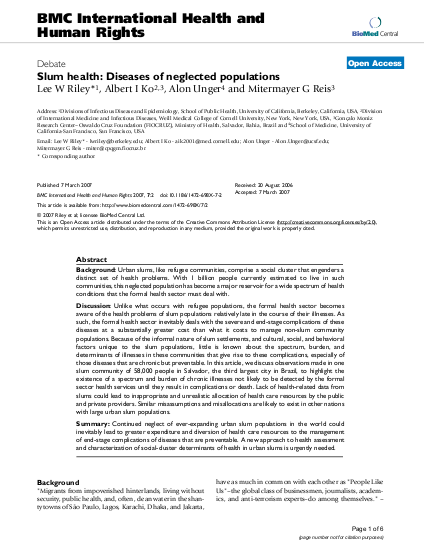
Unlike what occurs with refugee populations, the formal health sector becomes aware of the health problems of slum populations relatively late in the course of their illnesses. As such, the formal health sector inevitably deals with the severe and end-stage complications of these diseases at a substantially greater cost than what it costs to manage non-slum community populations. Because of the informal nature of slum settlements, and cultural, social, and behavioral factors unique to the slum populations, little is known about the spectrum, burden, and determinants of illnesses in these communities that give rise to these complications, especially of those diseases that are chronic but preventable. In this article, we discuss observations made in one slum community of 58,000 people in Salvador, the third largest city in Brazil, to highlight the existence of a spectrum and burden of chronic illnesses not likely to be detected by the formal sector health services until they result in complications or death. Lack of health-related data from slums could lead to inappropriate and unrealistic allocation of health care resources by the public and private providers. Similar misassumptions and misallocations are likely to exist in other nations with large urban slum populations.
Resource collections
- UN Habitat - Urban Response Collection
- Urban Response - Urban Crisis Preparedness and Risk Reduction
- Urban Response Collection - Community Engagement and Social Cohesion
- Urban Response Collection - Economic Recovery
- Urban Response Collection - Environment and Climate Change
- Urban Response Collection - Housing, Land and Property
- Urban Response Collection - Urban Crisis Response, Recovery and Reconstruction
- Urban Response Collection - Urban Resilience